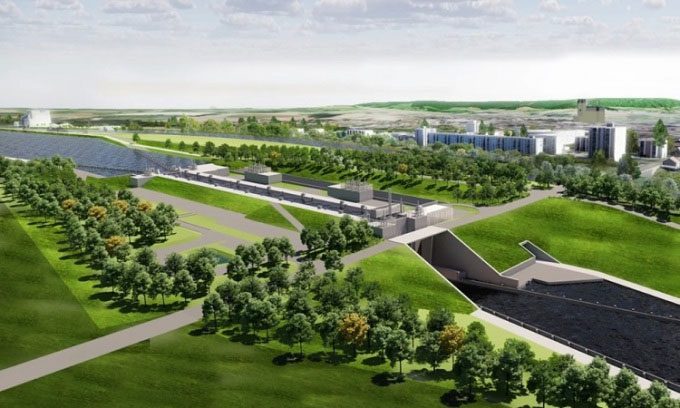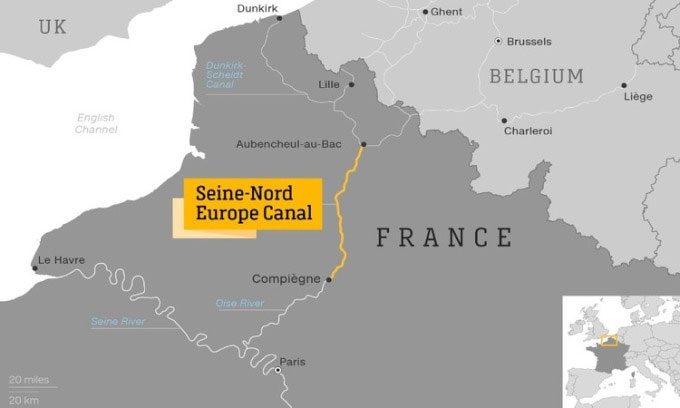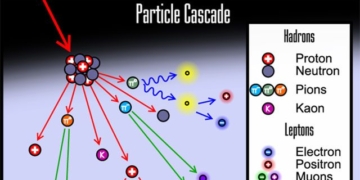The mega project of the Seine-Nord Europe Canal, spanning 107 km, will provide a seamless waterway for transporting goods between four European countries.

Perspective drawing of the lock in Noyon, Oise, part of the Seine-Nord Europe canal. (Photo: SCSNE/AEI-ONE)
After several delays, the Seine-Nord Europe Canal (SNEC) project is now under construction. This $5.5 billion initiative is designed to alleviate one of the major traffic bottlenecks in Europe. The 107 km canal will connect the Oise River and the Dunkirk-Escaut Canal, creating a waterway network capable of transporting large volumes of goods between Paris, Belgium, the Netherlands, and Luxembourg, replacing congested road routes. However, the project must overcome numerous challenges before it becomes operational in 2030.
Currently, the Nord Canal is the most important waterway connecting the Seine River basin with the Escaut River basin in northeastern France. Since its completion in the 1960s, this 95 km canal has been deemed insufficient for traffic due to its narrow dimensions, which limit vessel passage. The concept of a replacement canal for larger ships was first proposed 50 years ago but faced significant obstacles in its promotion. The SNEC project received funding from the European Union (EU) in 2013. In 2019, the French government reached a financial agreement with the EU and local authorities along the route.
According to Jérôme Dezobry, chairman of the executive board of the Société du Canal Seine-Nord Europe (SCSNE), the organization established to manage the SNEC, the canal’s 54-meter width is comparable to moving from a small road to a highway. The canal is capable of accommodating vessels weighing up to 4,400 tons (over seven times the limit of the old canal), transporting goods equivalent to 220 trucks.
The engineering and design firm Arcadis, which is consulting on the project, states that transporting goods via waterway generates three times less carbon than road transport. They estimate that the SNEC could help eliminate 760,000 trucks from the roads each year once operational. This mega project incorporates many significant infrastructure solutions. A lock with a height equivalent to a 10-story building can drain an amount of water equal to an Olympic-sized swimming pool in just 30 seconds, according to Dezobry.
“The SNEC project is particularly challenging due to its size and massive scale, with over 107 km in length, 60 bridges, 3 bridges crossing the canal, 7 locks, and 700 hectares of crops,” shared Philippe Bourdon, CEO of Arcadis in France.

Route of the Seine-Nord Europe canal. (Photo: SCSNE/AEI-ONE)
Crossing wetlands and agricultural land, the SNEC has raised many questions about its impact on the surrounding environment. The canal will not use groundwater; it will only draw water from the Oise River, storing it in a reservoir of 14 million cubic meters built in Allaines. Workers are currently undertaking a two-year project to redirect the flow of the Oise River over 4 km between the provinces of Thourotte and Montmacq to make way for the canal. According to Bourdon, engineers are striving to minimize the impact on the wetland area and the sensitive ecological zones in the Tortille Valley. New wetlands and forest areas will be created to compensate for any environmental damage. The most significant engineering achievement in the project will be a 1.3 km guide bridge that raises the canal 30 meters above the protected wetlands in the Somme Valley.
By connecting northeastern France with the 20,000 km European waterway network from Paris to Antwerp, the SNEC project will bring numerous benefits to local communities. Several inland ports are planned along the SNEC route, supporting exports and providing recreational opportunities. According to Xavier Bertrand, president of the Hauts-de-France regional council, the canal will transform the area, providing value in terms of tourism, housing, dining services, and river transport.




















































